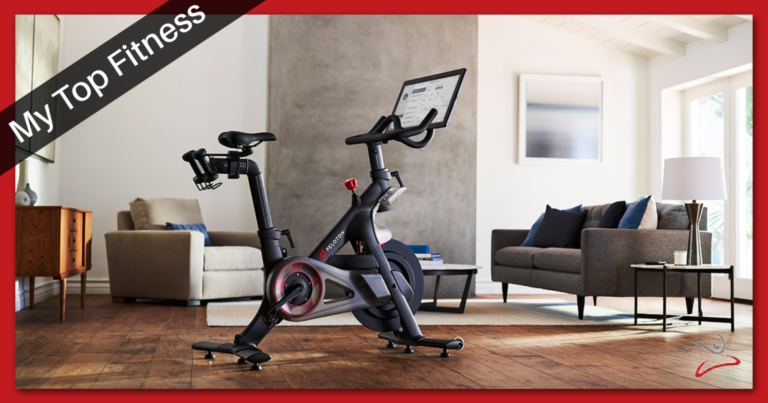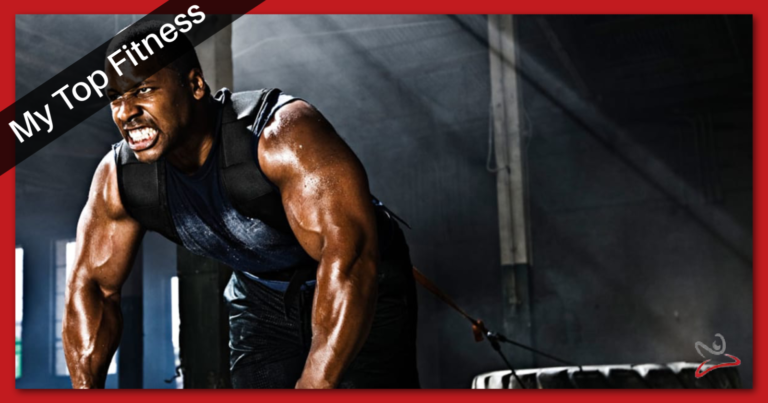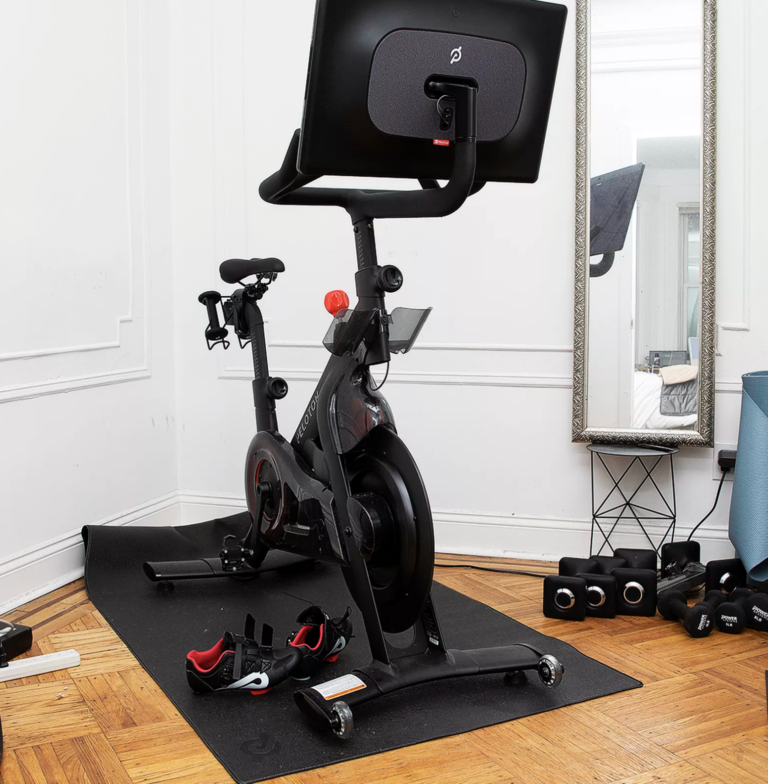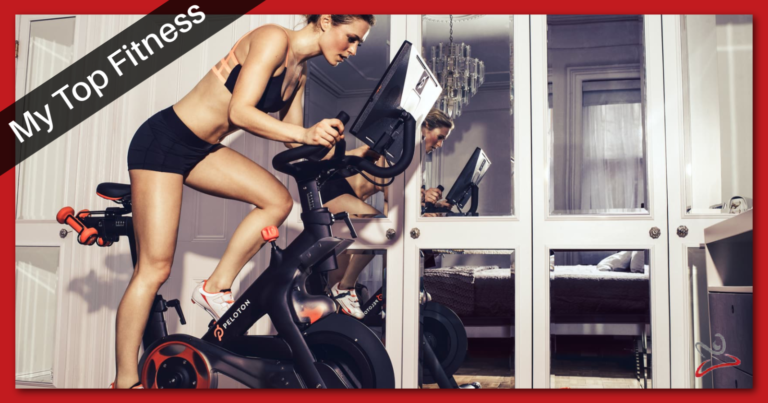How to Adjust Your Gym Bench: Quick and Easy Tips for a Better Workout!
Adjusting a gym bench may seem like a simple task, but it’s crucial to ensure that you’re performing your exercises correctly and safely. A poorly adjusted bench can lead to improper form, which can result in injuries or ineffective workouts. Whether you’re a beginner or an experienced gym-goer, adjusting a gym bench correctly is essential for maximizing your workout potential.
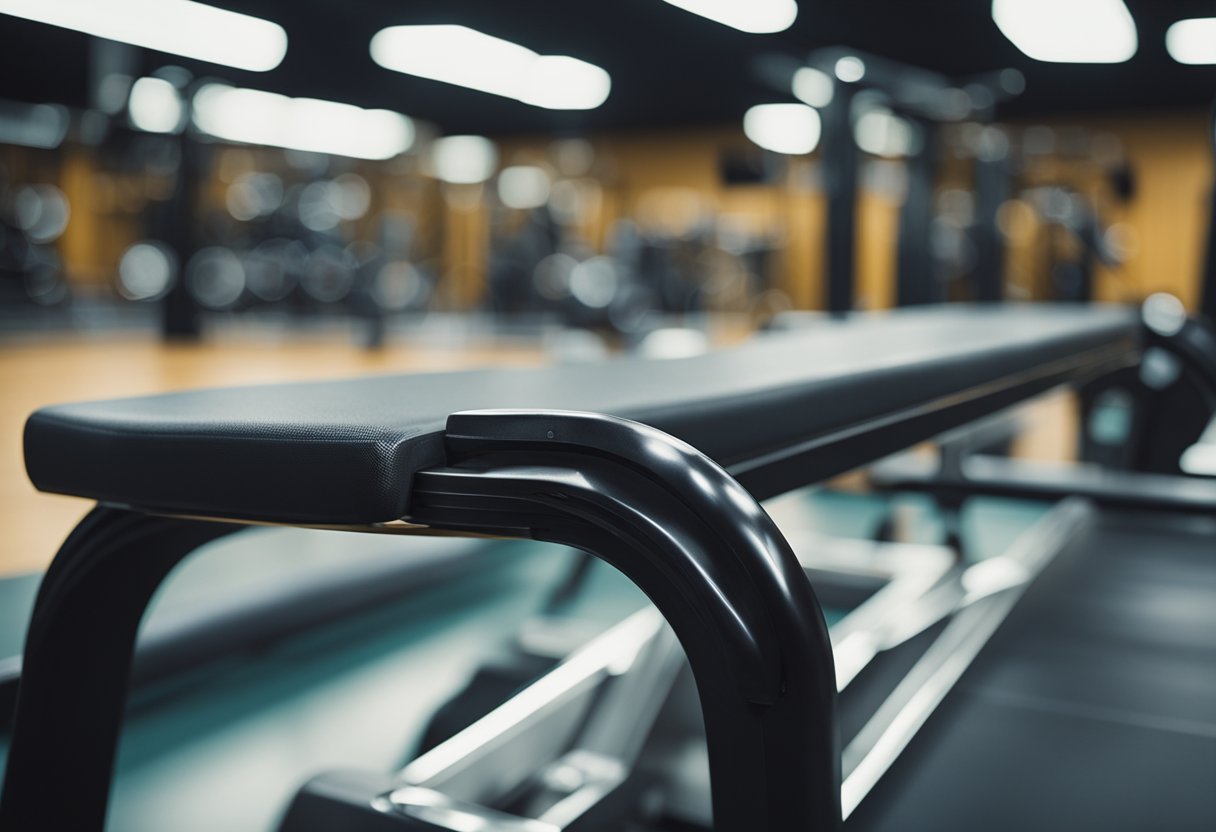
To properly adjust a gym bench, you first need to understand the different parts of the bench. Most gym benches have an adjustable backrest that can be moved up or down to different angles. Some benches also have adjustable seats, which can be moved forward or backward to accommodate different body types. Understanding the different parts of the bench is crucial to ensure that you can adjust it correctly and comfortably.
Once you understand the different parts of the bench, you can start adjusting it to fit your needs. Proper bench adjustment can help you target specific muscles and perform exercises with proper form. In this article, we’ll cover the fundamentals of adjusting a gym bench, exercises you can perform with a gym bench, and pro tips for getting the most out of your workouts.
Key Takeaways
- Understanding the different parts of a gym bench is crucial for proper adjustment.
- Proper bench adjustment can help you target specific muscles and perform exercises with proper form.
- Pro tips for adjusting a gym bench can help you get the most out of your workouts.
Understanding Gym Bench
If you’re new to the gym, you might be overwhelmed with the variety of gym equipment available. One of the most important pieces of equipment you’ll come across is the gym bench. A gym bench is a versatile piece of equipment that can be used for a variety of exercises, including bench press, dumbbell flys, and seated shoulder press.
There are different types of gym benches available, including flat benches, incline benches, decline benches, and adjustable benches. Flat benches are great for exercises that require a stable surface, like dumbbell press or skull crushers. Incline benches are used for exercises that require a slight incline, like incline bench press or incline dumbbell flys. Decline benches are used for exercises that require a decline, like decline bench press or decline dumbbell flys. Adjustable benches can be adjusted to different angles, making them versatile for a variety of exercises.
When choosing a gym bench, it’s important to consider factors like the weight capacity, the bench seat, and the adjustability. Some popular gym bench brands include Life Fitness, Hammer Strength, and Matrix.
Adjusting a gym bench is essential for proper form and safety during exercise. To adjust a gym bench, step up to the long side of the bench and locate the adjustable knob underneath the flattened backrest. Pull out the adjustable knob and adjust the bench to the desired angle. Make sure the bench is securely locked in place before use.
In summary, understanding the different types of gym benches and how to adjust them is crucial for a successful workout. Make sure to choose a gym bench that fits your needs and adjust it properly before use.
Fundamentals of Adjusting Gym Bench
Adjusting a gym bench is an essential skill that every gym-goer should know. Proper adjustment of the bench ensures that you can perform exercises with the correct form and avoid injuries. Here are some fundamentals of adjusting a gym bench:
Adjusting the Back Pad
The back pad is the foundation upon which your weight bench empire rests. Proper adjustment is vital to avoid feeling like a newbie during your workouts. To adjust the back pad, locate the adjustment pin, which is usually situated on the side or back of the bench. Pull out the pin and adjust the back pad to the desired angle. You can adjust the back pad to various angles, including incline, decline, or flat. Make sure that the back pad is secure and locked in place before you start exercising.
Adjusting the Seat
The seat position is another crucial aspect to consider when adjusting your gym bench. Most benches come with an adjustable seat mechanism that allows you to adjust the seat’s height and position. To adjust the seat, find the adjustable knob underneath the flattened backrest. Pull out the knob and adjust the seat to the desired position. You can adjust the seat to various positions, depending on the exercise you want to perform. Make sure that the seat is secure and locked in place before you start exercising.
Pad Gap
The pad gap is the distance between the back pad and the seat. Adjusting the pad gap is essential to ensure that you can perform exercises with the correct form. A small pad gap is suitable for exercises that require a stable base, such as the bench press. A large pad gap is suitable for exercises that require a greater range of motion, such as the shoulder press.
Bench Height
The bench height is another crucial aspect to consider when adjusting your gym bench. The bench height should be adjusted to your height to ensure that you can perform exercises with the correct form. A bench that is too high can cause shoulder injuries, while a bench that is too low can cause back injuries. Adjust the bench height to a level that allows you to perform exercises with the correct form.
Moving and Uneven Bench Press
Finally, make sure that your gym bench is stable and even. A moving or uneven bench can cause injuries during exercises such as the bench press. Check the adjustment mechanism regularly to ensure that it is working correctly. If you notice any issues, stop using the bench and inform the gym staff.
In conclusion, adjusting a gym bench is an essential skill that every gym-goer should know. Proper adjustment of the bench ensures that you can perform exercises with the correct form and avoid injuries. Follow the fundamentals of adjusting a gym bench to ensure that you get the most out of your workout.
Exercises and Gym Bench
Adjusting your gym bench to the right angle is essential for performing various exercises properly. Whether you’re doing bench press, chest press, or other exercises, the right angle can help you target specific muscles and improve your form. Here are some exercises you can do with an adjustable gym bench:
Dumbbell Bench Press
The dumbbell bench press is one of the most popular exercises you can do with an adjustable bench. This exercise targets your chest, shoulders, and triceps. To perform this exercise, lie down on the bench with your feet flat on the floor. Hold a dumbbell in each hand and extend your arms straight up over your chest. Slowly lower the dumbbells down to your chest, then push them back up to the starting position.
Barbell Bench Press
The barbell bench press is another popular exercise that targets your chest, shoulders, and triceps. To perform this exercise, lie down on the bench with your feet flat on the floor. Hold the barbell with both hands and extend your arms straight up over your chest. Slowly lower the barbell down to your chest, then push it back up to the starting position.
Chest Press
The chest press is a machine-based exercise that targets your chest, shoulders, and triceps. To perform this exercise, sit down on the chest press machine and adjust the seat height so that your hands are at chest level. Grasp the handles and push them away from your body until your arms are fully extended. Slowly bring the handles back to your chest and repeat.
Smith Machine
The Smith machine is a versatile piece of equipment that can be used for a variety of exercises, including bench press, squats, and lunges. To perform bench press on the Smith machine, adjust the bar height to your desired level and lie down on the bench. Grasp the bar with both hands and extend your arms straight up over your chest. Slowly lower the bar down to your chest, then push it back up to the starting position.
Workout Routine
Incorporating an adjustable gym bench into your workout routine can help you target specific muscles and improve your form. Whether you’re a beginner or an experienced gym-goer, there are plenty of exercises you can do with an adjustable bench. Try incorporating some of the exercises mentioned above into your next workout for a full-body workout that targets your chest, shoulders, and triceps.
Muscles and Gym Bench
When it comes to working out on a gym bench, it’s important to understand which muscles you’re targeting and how to adjust the bench to maximize your gains. The gym bench is a versatile piece of equipment that can be used to target a variety of muscle groups, including the chest, shoulders, core, triceps, and arms.
One of the primary muscle groups targeted by the gym bench is the chest muscles. By adjusting the incline of the bench, you can target different areas of the chest, such as the upper chest or lower chest. For example, a higher incline will target the upper chest, while a lower incline will target the lower chest.
In addition to the chest muscles, the gym bench can also be used to target the shoulders. By adjusting the bench to a seated position and using dumbbells, you can perform shoulder presses to target the deltoids.
The gym bench is also great for targeting the core muscles. By performing exercises such as crunches or sit-ups on the bench, you can engage your abs and obliques for a full core workout.
When using the gym bench, it’s important to remember to engage your muscle fibers. This means focusing on the mind-muscle connection and really feeling the muscle working during each exercise. By doing so, you’ll be able to maximize your gains and get the most out of your workout.
Overall, the gym bench is a versatile piece of equipment that can be used to target a variety of muscle groups. By adjusting the bench to the appropriate incline and focusing on engaging your muscle fibers, you’ll be able to get a full-body workout and achieve your fitness goals.
Pro Tips for Adjusting Gym Bench
Adjusting a gym bench can be a bit tricky, especially if you’re new to weightlifting. But with a few pro tips, you’ll be able to get your bench set up just right for a safe and effective workout.
First and foremost, make sure to check the weight capacity of the bench before you start adjusting it. You don’t want to risk injury by putting too much weight on a bench that can’t handle it.
Next, pay attention to the stability of the bench. Make sure it’s on a level surface and that all the legs or wheels are securely locked in place. You don’t want your bench wobbling or tipping over during your workout.
When adjusting the bench, focus on your form and technique. The back pad should be at a comfortable angle that allows you to perform your exercises with proper form. If you’re not sure what angle to use, start with a slight incline and adjust as needed.
If the bench has handles or support bars, make sure they’re in a comfortable position for you to use during your exercises. You don’t want to strain your shoulders or arms by reaching too far or at an awkward angle.
Finally, pay attention to the little details. If the bench has wheels, make sure they’re locked in place before you start your workout. If the feet of the bench are adjustable, make sure they’re at the right height for your comfort.
By following these pro tips, you’ll be able to adjust your gym bench like a pro and get the most out of your weightlifting workouts.
Home Gym and Gym Bench
Are you thinking about setting up a home gym? If so, one of the most crucial pieces of equipment you’ll need is a gym bench. A gym bench is a versatile and essential piece of equipment that allows you to perform a wide range of exercises and movements.
When it comes to choosing a gym bench for your home gym, there are several factors to consider. First and foremost, you’ll want to choose a bench that is sturdy and durable. A high-quality gym bench will be able to withstand the wear and tear of regular use and support your weight during heavy lifts.
Another essential factor to consider when choosing a gym bench is adjustability. Different exercises require different bench angles, so having a bench that can be easily adjusted to different positions is crucial. Look for a bench that can be adjusted to incline, decline, and flat positions.
One option for a high-quality gym bench is Rep Fitness. Rep Fitness offers a range of gym benches that are sturdy, durable, and adjustable. They also offer a range of accessories and attachments to customize your bench to your specific needs.
Overall, a gym bench is an essential piece of equipment for any home gym. When choosing a gym bench, look for one that is sturdy, durable, and adjustable. Consider Rep Fitness for a high-quality gym bench option.
Understanding Bench Press Imbalances
If you’ve been bench pressing for a while, you may have noticed that one side of your body is stronger than the other. This is known as a muscular imbalance, and it can affect your form and your ability to lift heavier weights.
Muscular imbalances can be caused by a number of factors, including previous injuries, poor posture, and favoring one side of your body during exercises. When it comes to the bench press, imbalances can be particularly noticeable, as the exercise requires both sides of your body to work together in a synchronized manner.
If you have a muscular imbalance, it’s important to address it before it becomes a bigger issue. Here are some tips to help you identify and correct bench press imbalances:
-
Start with a lighter weight: If you’re struggling to lift the same weight with both arms, it’s a good idea to start with a lighter weight and focus on your form. This will help you identify any imbalances and correct them before you start lifting heavier weights.
-
Use dumbbells: Using dumbbells instead of a barbell can help you identify any imbalances, as each arm has to work independently. This can also help you correct any imbalances by focusing on weaker areas.
-
Incorporate unilateral exercises: Unilateral exercises, such as single-arm dumbbell presses, can help you correct imbalances by focusing on weaker areas. This will help you build strength and improve your overall bench press performance.
-
Stretch and foam roll: Tight muscles can contribute to imbalances, so it’s important to stretch and foam roll regularly. Focus on areas such as your chest, shoulders, and back to help improve your mobility and reduce the risk of injury.
By addressing bench press imbalances, you can improve your form, reduce the risk of injury, and lift heavier weights. Remember to start with a lighter weight, use dumbbells, incorporate unilateral exercises, and stretch and foam roll regularly. With consistent effort, you can correct imbalances and improve your overall bench press performance.
Comfort and Gym Bench
When it comes to working out, comfort is key. If you’re not comfortable on your gym bench, you’re not going to be able to perform your exercises to the best of your ability. That’s why it’s important to adjust your gym bench to fit your body and your needs.
One of the most important aspects of a gym bench is the cushioning. You want to make sure that the cushioning is thick enough to provide support, but not so thick that it’s uncomfortable. If the cushioning is too thin, you may feel like you’re lying on a hard surface, which can be painful and distracting. On the other hand, if the cushioning is too thick, you may sink into the bench, which can throw off your form and make it difficult to perform your exercises correctly.
Another important aspect of a gym bench is the seat pad. The seat pad should be adjustable so that you can find the right angle for your body. If the angle is too steep, you may feel like you’re sliding down the bench, which can be uncomfortable and distracting. If the angle is too flat, you may feel like you’re lying on a flat surface, which can be painful and distracting.
To adjust the seat pad, start by sitting on the bench with your feet flat on the ground. Adjust the seat pad so that your knees are at a 90-degree angle. This will help to take pressure off your lower back and ensure that you’re in the correct position for your exercises.
In summary, when it comes to adjusting your gym bench for comfort, focus on the cushioning and the seat pad. Make sure that the cushioning is thick enough to provide support, but not so thick that it’s uncomfortable. Adjust the seat pad so that your knees are at a 90-degree angle and you’re in the correct position for your exercises. With these adjustments, you’ll be able to perform your exercises comfortably and to the best of your ability.

